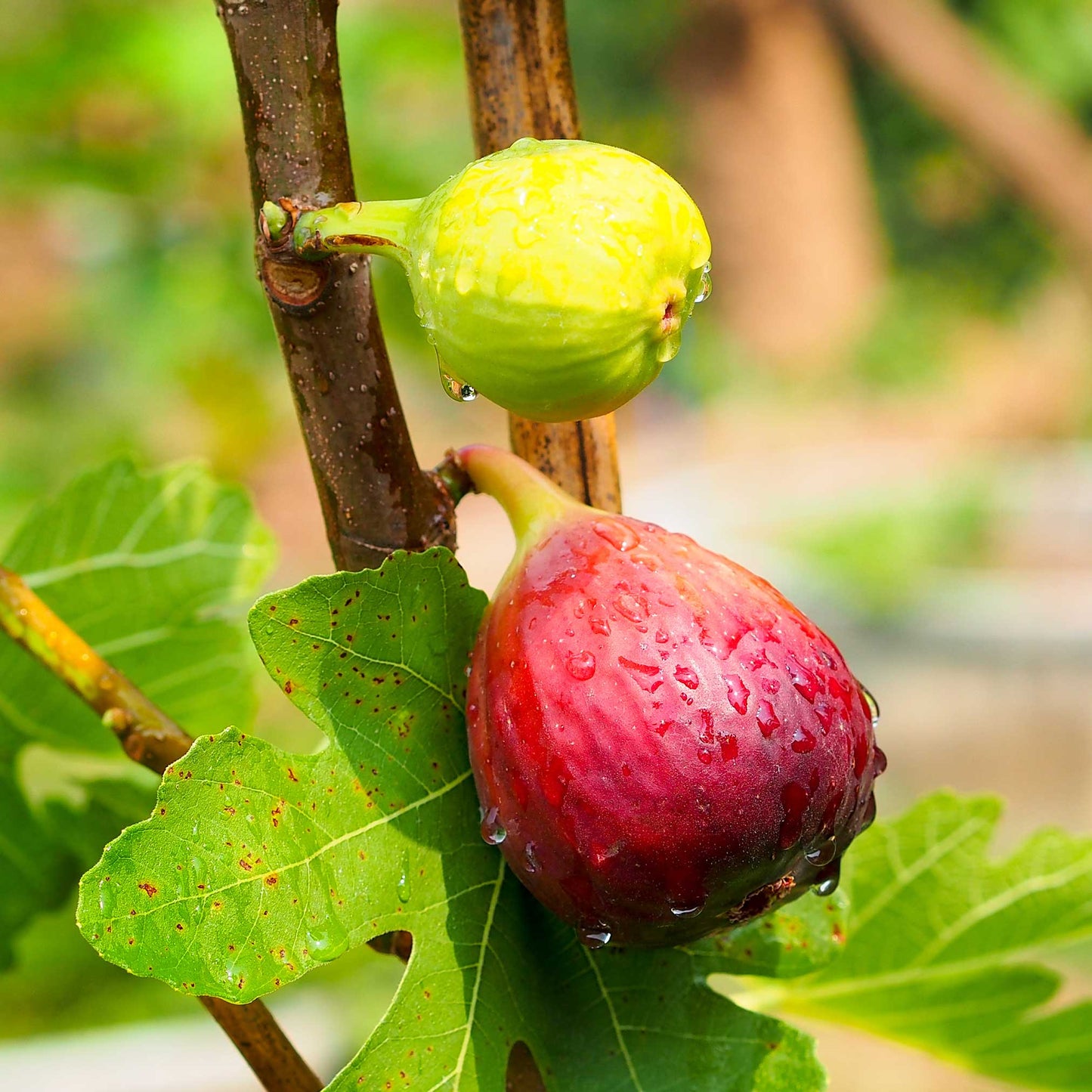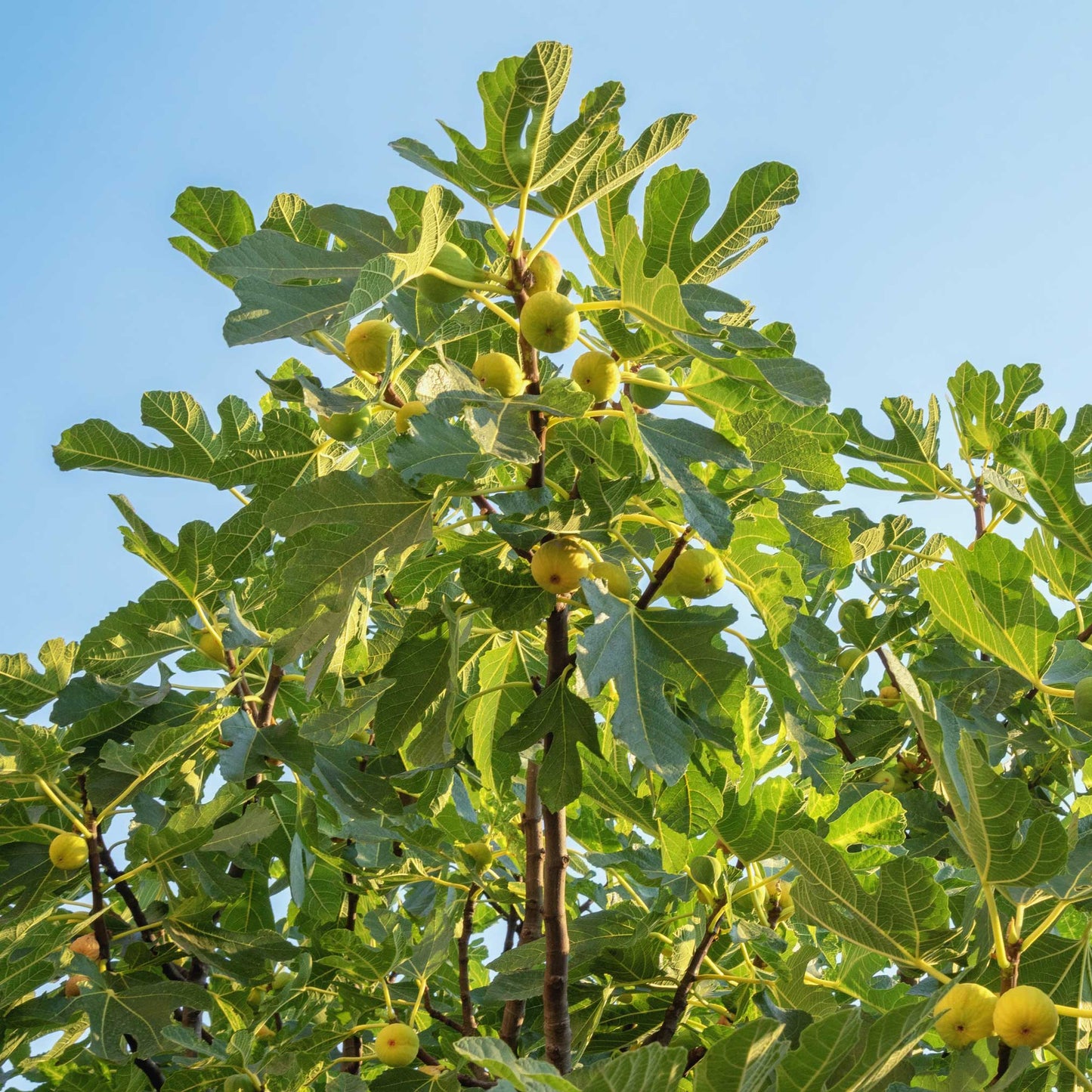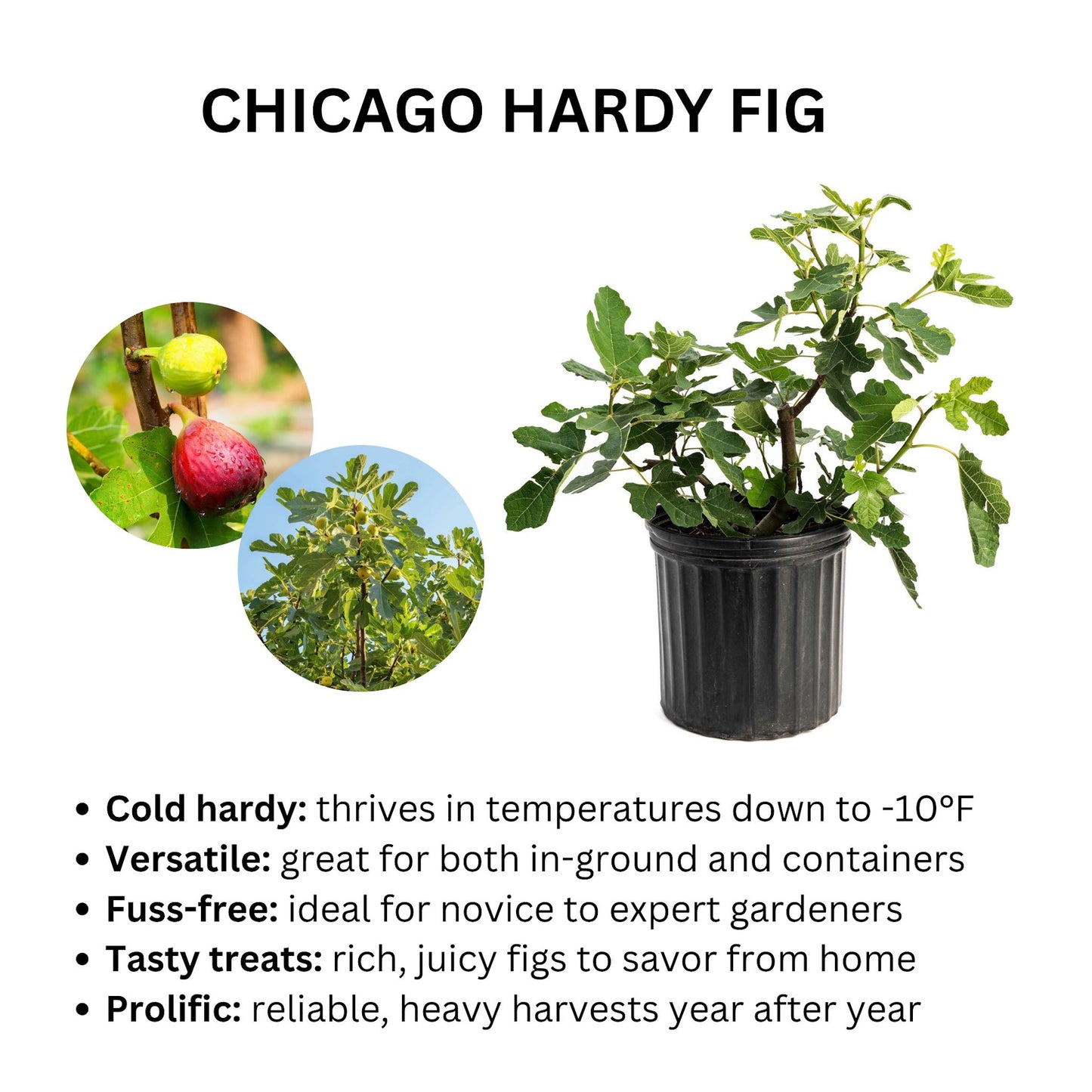Chicago Hardy Fig Tree
Chicago Hardy Fig Tree
SKU:EDB-FIG-CHI-NA-3G
Meet the Unstoppable Chicago Hardy Fig Tree!
Looking for a fruit tree that laughs in the face of chilly weather? The Chicago Hardy Fig Tree is your new backyard hero. This resilient tree is known for its ability to withstand temperatures down to -10°F, making it a perfect pick for gardeners in cooler climates who dream of homegrown figs.
Why You'll Love It:
- Hardy as a Midwestern Winter: It's in the name, and it's in the game. The Chicago Hardy Fig doesn't just survive; it thrives in zones 5 through 10.
- Sweet Harvest: Enjoy a bounty of sweet, rich figs perfect for snacking, baking, or sharing with neighbors (if you're feeling generous).
- Grow-Anywhere Charm: Whether in a garden bed or a container on your patio, this fig tree is versatile and space-conscious.
- Low Maintenance: Not a green thumb? No worries. This tree asks for minimal fuss, making it ideal for both novice and expert gardeners.
Planting & Care:
Simply find a sunny spot, give it some water, and watch your Chicago Hardy Fig Tree take off. With just a bit of love, you'll be the fig-fanatic of your neighborhood in no time!
Get Yours Today!
Ready to transform your garden into a figgy paradise? Order your Chicago Hardy Fig Tree now and savor the sweet rewards!








Product Details
-
Product Category
Edibles
-
Product Subcategory:
Figs
-
Botanical Name:
Ficus carica 'Chicago Hardy'
-
Does Not Ship To:
AZ, OR
-
Mature Height:
15-30 ft.
-
Mature Width:
15-30 ft.
-
Growing Zone:
5-10 outdoors
-
Indoor Growing:
-
Sunlight:
Full Sun
-
Growth Rate:
Moderate
-
Harvest Time:
July - October
-
Bloom Time:
Spring

Planting Directions
<h2>Planting Chicago Hardy Fig Tree</h2>
<ul>
<li>Select a sunny, sheltered spot with well-draining soil.</li>
<li>Plant in spring after the last frost to give the tree a full growing season.</li>
<li>Dig a hole twice as wide and the same depth as the root ball.</li>
<li>Place the tree in the hole, spreading out the roots gently.</li>
<li>Backfill with soil, watering deeply to settle the roots.</li>
<li>Mulch around the base to retain moisture and regulate soil temperature.</li>
</ul>
<h2>Care for Chicago Hardy Fig Tree</h2>
<ul>
<li>Water regularly during the first growing season to establish roots.</li>
<li>Apply a balanced fertilizer in early spring and mid-summer.</li>
<li>Prune in late winter to remove dead wood and shape the tree.</li>
<li>Protect the tree in winter by wrapping it or using a cold frame.</li>
</ul>
<h2>Pollination</h2>
<p>Chicago Hardy Figs are self-pollinating, so you don't need another tree for fruit production.</p>
<h2>Harvesting</h2>
<ul>
<li>Harvest figs when they are soft to the touch and hanging down.</li>
<li>Pick ripe figs gently to avoid bruising the fruit.</li>
<li>Enjoy fresh figs immediately or preserve them through drying or jam-making.</li>
</ul>
<p>Monitor your fig tree's growth and adjust care as needed. With proper planting and maintenance, your Chicago Hardy Fig Tree should thrive and produce fruit for years to come.</p>

FAQs
<h2>FAQs for the Chicago Hardy Fig Trees</h2>
<h2>1. How do I plant a Chicago Hardy Fig Tree?</h2>
<ol>
<li><strong>Choose the right location:</strong> Select a sunny spot that receives at least 8 hours of sunlight daily. Ensure the soil is well-draining.</li>
<li><strong>Prepare the soil:</strong> Mix compost or well-rotted manure into the planting hole to improve soil fertility and structure.</li>
<li><strong>Planting:</strong> Dig a hole twice as wide and just as deep as the root ball. Place the tree in the hole, ensuring it's at the same depth it was in the pot. Fill the hole with soil, gently tamping down to remove air pockets.</li>
<li><strong>Watering:</strong> Water the tree deeply after planting. Maintain consistent moisture, especially during the first growing season.</li>
<li><strong>Mulching:</strong> Apply a 2-3 inch layer of mulch around the base of the tree to retain soil moisture and regulate temperature.</li>
</ol>
<h2>2. How do I fertilize my Chicago Hardy Fig Tree?</h2>
<ul>
<li><strong>Initial Fertilization:</strong> Wait to fertilize until the tree has been planted for a full year to avoid burning the roots.</li>
<li><strong>Regular Fertilization:</strong> Apply a balanced, slow-release fertilizer in early spring as new growth appears. Follow the manufacturer's instructions for application rates.</li>
<li><strong>Organic Options:</strong> Compost or well-rotted manure can be applied around the base of the tree annually for natural nutrient supplementation.</li>
</ul>
<h2>3. How do I ensure proper pollination of my Chicago Hardy Fig Tree?</h2>
<p><strong>Chicago Hardy Fig Trees</strong> are self-fertile, meaning they do not require another tree to pollinate and produce fruit. However, to encourage a more abundant harvest, you can:</p>
<ul>
<li>Plant more than one tree to increase pollination opportunities, even though it's not necessary.</li>
<li>Attract pollinators like bees and birds to your garden by planting a variety of flowering plants nearby.</li>
</ul>
<h2>4. How do I water my Chicago Hardy Fig Tree?</h2>
<ul>
<li><strong>Initial Watering:</strong> Water deeply immediately after planting. Ensure the soil is thoroughly moistened.</li>
<li><strong>Regular Watering:</strong> During the first growing season, water the tree deeply once a week, allowing the soil to dry out slightly between waterings. Adjust based on rainfall and temperature.</li>
<li><strong>Mature Trees:</strong> Established trees are more drought-tolerant but benefit from occasional deep watering during prolonged dry spells.</li>
</ul>
<h2>5. When and how do I harvest figs from my Chicago Hardy Fig Tree?</h2>
<ul>
<li><strong>Timing:</strong> Figs are typically ready to harvest in late summer to early fall. Look for fruit that is soft to the touch and has a deep purple color.</li>
<li><strong>Harvesting:</strong> Gently twist the fruit off the tree, being careful not to damage the branch. Wear gloves to protect your hands from the fig's milky sap, which can be irritating to some people.</li>
<li><strong>Storage:</strong> Figs are best enjoyed fresh but can be stored in the refrigerator for a few days. For longer storage, figs can be dried or preserved.</li>
</ul>
<p>By following these guidelines, you can successfully grow and enjoy the bounty of a Chicago Hardy Fig Tree in your garden. Remember, patience and consistent care are key to cultivating a healthy and productive tree.</p>









